Antibody data
- Antibody Data
- Antigen structure
- References [1]
- Comments [0]
- Validations
- Immunocytochemistry [2]
- Immunohistochemistry [2]
- Other assay [3]
Submit
Validation data
Reference
Comment
Report error
- Product number
- PA5-21111 - Provider product page

- Provider
- Invitrogen Antibodies
- Product name
- BCL9L Polyclonal Antibody
- Antibody type
- Polyclonal
- Antigen
- Synthetic peptide
- Description
- A suggested positive control is Hela cell lysate. PA5-21111 can be used with blocking peptide PEP-1225.
- Reactivity
- Human
- Host
- Rabbit
- Isotype
- IgG
- Vial size
- 100 μg
- Concentration
- 1 mg/mL
- Storage
- 4°C
Submitted references Cell softness regulates tumorigenicity and stemness of cancer cells.
Lv J, Liu Y, Cheng F, Li J, Zhou Y, Zhang T, Zhou N, Li C, Wang Z, Ma L, Liu M, Zhu Q, Liu X, Tang K, Ma J, Zhang H, Xie J, Fang Y, Zhang H, Wang N, Liu Y, Huang B
The EMBO journal 2021 Jan 15;40(2):e106123
The EMBO journal 2021 Jan 15;40(2):e106123
No comments: Submit comment
Supportive validation
- Submitted by
- Invitrogen Antibodies (provider)
- Main image
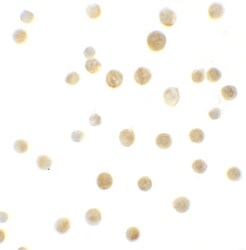
- Experimental details
- Immunocytochemistry of Bcl9L in HeLa cells with BCL9L Polyclonal Antibody (Product # PA5-21111) at 10 µg/mL.
- Submitted by
- Invitrogen Antibodies (provider)
- Main image
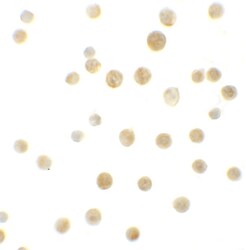
- Experimental details
- Immunocytochemistry of Bcl9L in HeLa cells with BCL9L Polyclonal Antibody (Product # PA5-21111) at 10 µg/mL.
Supportive validation
- Submitted by
- Invitrogen Antibodies (provider)
- Main image
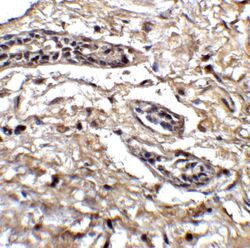
- Experimental details
- Immunohistochemistry of Bcl9L in human breast tissue with BCL9L Polyclonal Antibody (Product # PA5-21111) at 5 µg/mL.
- Submitted by
- Invitrogen Antibodies (provider)
- Main image
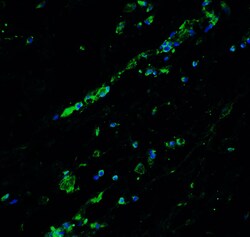
- Experimental details
- Immunofluorescence of Bcl9L in human breast tissue with BCL9L Polyclonal Antibody (Product # PA5-21111) at 20 µg/mL. Green: Bcl9L Blue: DAPI staining
Supportive validation
- Submitted by
- Invitrogen Antibodies (provider)
- Main image
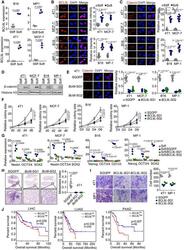
- Experimental details
- EV5 Figure BCL9L participates in regulating the stemness of soft tumor cells A The mRNA expression of BCL9L in stiff or soft B16, MP-1, 4T1, or MCF-7 cells was determined by real-time PCR. n = 3. B, C The stiff or soft B16, MP-1, 4T1, or MCF-7 cells were stained with anti-BCL9L (B) or anti-beta-catenin (C) and DAPI and observed under confocal microscope. The relative intensity was quantified. Scale bar, 10 mum. n = 10. D The expression of nuclear beta-catenin in stiff or soft 4T1, MCF-7, B16, or MP-1 cells was determined by Western blot. E SGGFP, BCL9L -SGs- 4T1, MCF-7, B16, or MP-1 cells were stained with anti-beta-catenin antibody and observed under confocal microscope. The relative intensity was quantified. Scale bar, 10 mum. n = 10. F 500 soft SGGFP or BCL9L -SGs-4T1, MCF-7, B16, or MP-1 cells were seeded in 90 Pa soft 3D fibrin gel for the indicated time periods. The colony size was measured. The colony size in D0 (day 0) was set to 1. n = 3. G The mRNA expression of Nestin, Nanog, OCT3/4, CD133, or SOX2 in stiff or soft SGGFP or BCL9L -SGs- B16, MP-1, 4T1, or MCF-7 cells was detected by real-time PCR. n = 3. H The 100 soft SGGFP or BCL9L -SGs-4T1 cells were injected into the mammary fat pads of NSG mice for 8 weeks. Then, mice were sacrificed and the lung sections were performed H&E stained. The metastasis index was calculated. n = 5 mice with metastatic tumor. Scale bar, 0.5 mm. I The Transwell invasion assay from soft SGGFP- or BCL9L -SGs- 4T1 or MP-1 cells. The numbe
- Submitted by
- Invitrogen Antibodies (provider)
- Main image
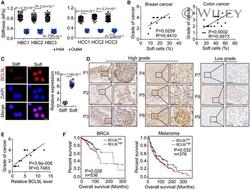
- Experimental details
- 6 Figure BCL9L highly expressed in soft tumor cells from cancer patients The stiffness of primary breast (HBC, n = 3) and colon (HCC, n = 3) cancer cells screened from the outlet or backflow inlet was measured by AFM. n = 100 from each patient. The correlation between the percentage of soft primary tumor cells from patients with breast ( n = 11) or colon ( n = 23) cancer and the grade of breast or colon cancer, respectively. The stiff and soft tumor cells were isolated from 3 patients with breast cancer and stained with anti-BCL9L antibody. The expression of BCL9L was observed under confocal microscope. Scale bar, 10 mum. The tissue sections from 6 melanoma patients with high grades of cancer and 3 melanoma patients with low grade of malignancy were immunohistochemical staining with anti-BCL9L antibody. Scale bar, 50 mum. The correlation between the expression of BCL9L from 18 patients with melanoma and the grade of melanoma. Overall survival compared with the BCL9L level in patients with breast cancer (BRCA, n = 536) or melanoma ( n = 376). Data information: Mann-Whitney test (A), paired Student's t -test (C), Pearson's correlation test (B and E) or Log-rank survival analysis (F). The data represent mean +- SD.
- Submitted by
- Invitrogen Antibodies (provider)
- Main image
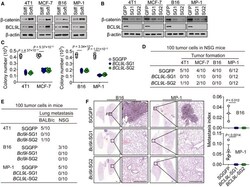
- Experimental details
- Figure 5 BCL9L is the key mediator to regulate the stemness and tumorigenicity of soft tumor cells A The expression of BCL9L or beta-catenin in stiff or soft 4T1, MCF-7, B16, or MP-1 cells was determined by Western blot. B The expression of beta-catenin and BCL9L from SGGFP, BCL9L -SGs-4T1, MCF-7, B16, or MP-1 cells were determined by Western blot. C 500 soft SGGFP or BCL9L -SGs- 4T1, MCF-7, B16-F1, or MP-1 cells were seeded in a 90 Pa soft 3D fibrin gel for 6 days. The number of formed colonies was counted. n = 10. D The soft SGGFP or BCL9L -SGs- 4T1, MCF-7, B16, or MP-1 cells (100 cells) were injected into the mammary fat pads (4T1 and MCF-7) or subcutaneous tissue (B16 and MP-1) of NSG mice. Tumor formation was recorded. n = 10 or 12 mice as indicated. E, F The 100 soft SGGFP or BCL9L -SGs- 4T1, B16, or MP-1 cells were injected into the mammary fat pads (4T1) of BALB/c mice or tail vein (B16 and MP-1) of NSG mice. The tumor formation was recorded (E). Six to eight weeks later, the lung sections were H&E stained. The metastatic micronodules in the lung were counted, and the metastasis index was calculated (F). Scale bar, 0.5 mm. n = 3 (for B16-F1) or 5 (for MP-1) mice with metastatic tumor. Data information: Bonferroni test (C and F). The data represent mean +- SD. n = 3 independent experiments in (A and B). Source data are available online for this figure.
 Explore
Explore Validate
Validate Learn
Learn Western blot
Western blot Immunocytochemistry
Immunocytochemistry